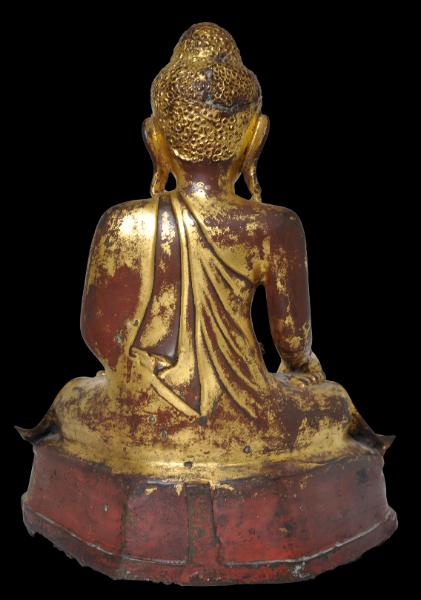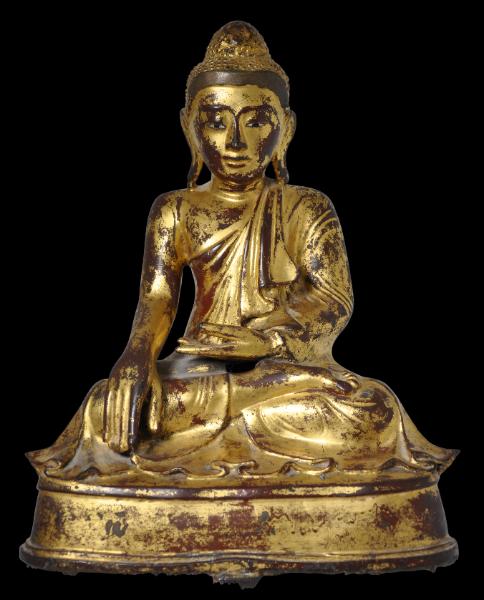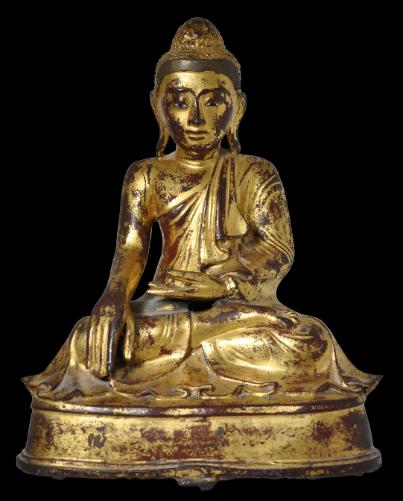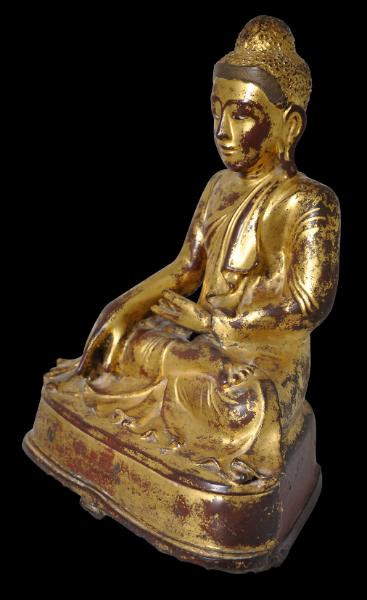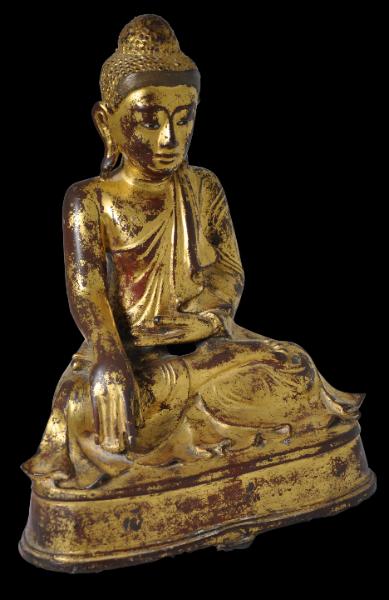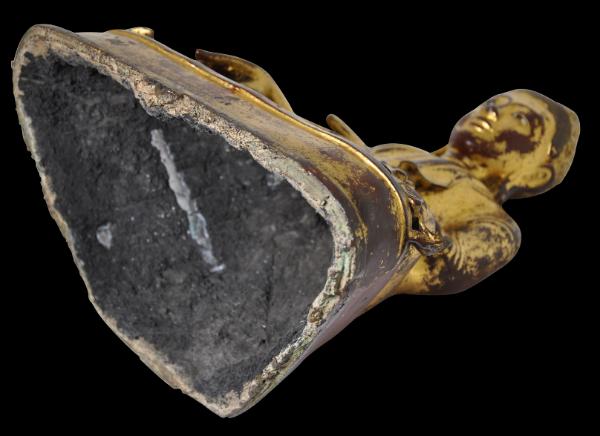
Mandalay Burmese Buddha
Gilded, Lacquered Bronze Buddha
Mandalay, Burma
circa 1850
height: 36.5cm, width: 29.5cm
This image of the Buddha has been cast in bronze or a copper alloy in the Mandalay style. It shows the Buddha seated in vajrasana, with his right hand gesturing to the earth in the bhumisparsa mudra position. It is probably the most characteristic form of religious sculpture in Burma (Lowry, 1974). The posture, known as ‘calling the earth to witness’, represents the moment when the Buddha was seated in meditation under the Bodhi tree during the evening before his enlightenment. Mara asked him to name anyone who would give evidence that he had given alms, and the Buddha motioned to the earth with his right hand and said that the earth would bear witness to that – in a previous incarnation when he was known as Vessantara, he had given alms to such an extent that the earth had begun to quake.
The image shows the Buddha seated on a low platform or socle and dressed in ample robes with naturalistic folds and pleating. Earlier images of the Buddha across Southeast Asia tended to show the monastic robes in a much more schematic way.
The eyes have been inlaid with a white material, usually described as mother-of-pearl, with black pupils probably painted on with black lacquer.
The image has been lacquered with cinnabar-red lacquer and then gilded. Many and possibly most Mandalay bronze images originally were lacquered and gilded in this way, but over time, the covering has flaked here and there and so the images were scraped clean (McGill, 2009, p. 76). This image is unusual then for having retained much of its original lacquering and gilding. There are losses here and there but it is largely intact.
The rim around the base has some small jagged sections suggesting that originally this image was meant to sit on a wooden dais. It sits firmly and flatly in any event. There are no dents or breaks. The image is in a fine, stable condition. It is hollow cast using the lost wax technique and its interior retains much of the original core material used in the casting process. Overall, the image is tremendously sculptural and decorative: the flow of the robes and the face are particularly pleasing.
References
Fraser-Lu, S., Burmese Lacquerware, White Orchid Books, 2000.
Karow, O.,
Burmese Buddhist Sculpture: The Johan Moger Collection, White Lotus, 1991.
Lowry, J.,
Burmese Art, Victoria and Albert Museum, 1974.
McGill, F. (ed.),
Emerald Cities: Arts of Siam and Burma, 1775-1950, Asian Art Museum, 2009.
Provenance
UK art market.
Inventory no.: 2223
SOLD

